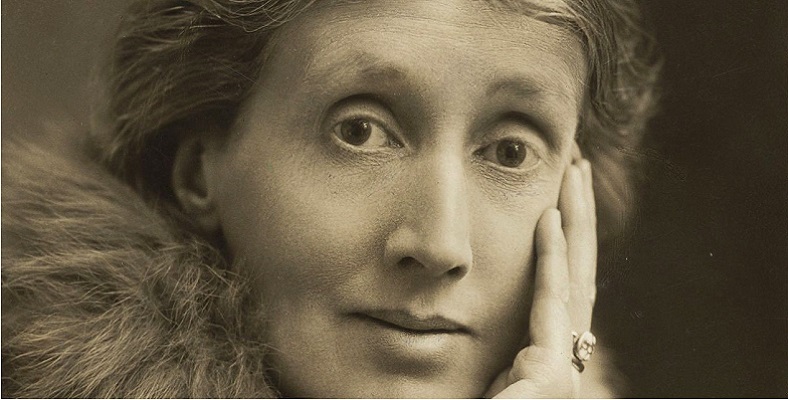7 Imagery and identity
In Between the Acts Woolf delights in playing with the idea that a single name could possibly sum up a person. Mrs Swithin is also known as Batty (Between the Acts, p.8), Cindy, Sindy, Lucy (p.19) and ‘Old Flimsey’ (p.24), while the name ‘Swithin’ itself suggests opposites, fair weather and rain, as the old saying goes: ‘St Swithin’s day if thou dost rain/For forty days it will remain./St Swithin’s day if thou be fair/For forty days ‘twill rain nae mare’. ‘”And which will it be?” Mrs Swithin continued. “Wet or fine?”’ (p.20). The boy who delivers the fish has a name which was ‘in the Domesday book’ (p.29), but we never learn what it is. The cook is Mrs Sands, called ‘by old friends, Trixie’ (p.29); the cat is Sung-Yen in the drawing room, but Sunny in the kitchen. Similarly Mr Oliver is Bart to his sister, ‘The Master’ in the drawing room and ‘Bartie’ in the kitchen. ‘”Never play”, her mother used to say, “on people’s names”’ (p.30) thinks Mrs Swithin, but that is exactly what Woolf does. Our identities are intimately associated with our names, but with so many different versions used by different people in different circumstances, how effective are they at summing up or pinning that identity down? Or is Woolf suggesting that identity constantly changes, and is far too elusive to be summed up by one single name?
In her essay ‘Street Haunting’, published in 1927, ten years before Woolf started work on Between the Acts, she asks a related question about identity:
Is the true self this which stands on the pavement in January, or that which bends over the balcony in June? Am I here, or am I there? Or is the true self neither this nor that, neither here nor there, but something so varied and wandering that it is only when we give the rein to its wishes and let it take its way unimpeded that we are indeed ourselves? Circumstances compel unity; for convenience’ sake a man must be a whole.
The notion of an integrated sense of self is only a ‘convenience’, not the ‘true self’. In Between the Acts, Isa, a shortened version of Isabella, is also Mrs Giles Oliver, the formal title indicating both her marital status and her husband. As she brushes her hair standing in front of the ‘three-folded mirror’ Isa can see ‘three separate versions’ of herself (p.12). Perhaps because of the tension between her and her husband, her eyes reflected in the mirror tell her that she is ‘In love’ with the ‘romantic gentleman farmer’, Rupert Haines (p.4) who had given her ‘a cup of tea at a tennis party; handed her once, a racquet’ (pp.4, 13, 187). At the same time ‘on the washstand, on the dressing table, among the silver boxes and tooth-brushes’ (p.13) she sees her love for her husband:
‘The father of my children’ she added, slipping into the cliché conveniently provided by fiction. Inner love was in the eyes; outer love on the dressing-table. But what feeling was it that stirred in her now when above the looking glass, out of doors, she saw coming across the lawn the perambulator; two nurses; and her little boy George, lagging behind?
The mirror/glass/window imagery recurs time and again with numerous variations on the theme of ‘reflection’ in the pages that follow. Isa is compelled to look at her image in shop windows (p.14). In an unusual passage the third-person narrator recalls a ‘foolish, flattering lady’ saying that, rather than eyes, ‘Books are the mirrors of the soul’ (p.15), commenting that in this case it is a ‘tarnished, a spotted soul’ (p.15). Isa later repeats the same sentiment about books as she lists the poets, Keats, Shelley, Yeats, Donne: ‘There they were, reflecting’ (p.18). Each use of this recurring motif is slightly different: Mrs Manresa uses her mirror confidently to touch up her lipstick (p.120); a character in the pageant recalls her aunt’s ‘cracked mirror’ (p.121). These repetitions gather momentum throughout the text until the pageant reaches the present day when the actors come out from the bushes:
Holding what? Tin cans? Bedroom candlesticks? Old jars? My dear, that’s the cheval glass from the Rectory! And the mirror – that I lent her. My mother’s. Cracked. What’s the notion? Anything that’s bright enough to reflect, presumably, ourselves?
The audience are not pleased, all ‘evaded or shaded’ themselves (p.167), upset at the fragments that are reflected allowing them no time ‘to assume’ a suitable posture or expression; no one whole, everyone fragmented and distorted ‘And the mirrors! Reflecting us…I called that cruel’ (p.179). Only Mrs Manresa powders her nose, tidies her hair and contemplates her reflection with equanimity.
